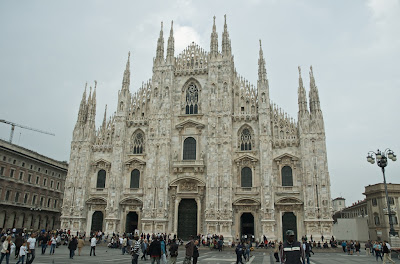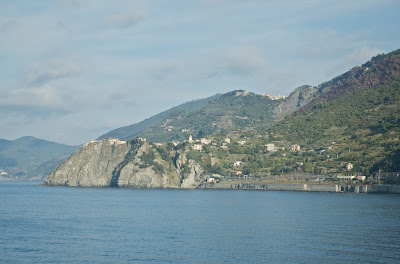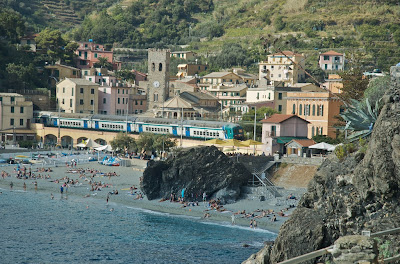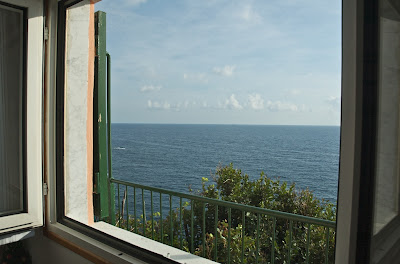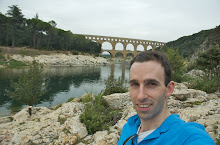After visiting Auschwitz I, the original concentration camp, and Auschwitz II-Birkenau, the much larger extermination camp, the tour guide asked whether anyone had any questions. Silence. But it wasn't that no one had any questions - it's just that they were not the sort of questions that even the most worldly guide could answer. How could humans treat others in such appalling and shocking ways and think it right? How could a society come to the collective view that an entire race was sub-human and inferior, yet also a threat that needed to be destroyed? How could fellow humans devise such a sophisticated operation - and on such a grand a scale - with the explicit aim of murdering hundreds of thousands of people?
They're not questions I've been able to answer and nor do I expect to be able to.
There is a lot of expectation around visiting Auschwitz, which as incongruous as it sounds, is one of Poland's top tourist attractions. Visiting Auschwitz I, originally established as Polish army barracks, is somewhat surreal - partly because you come with ideas about what happened here, but also because it is so familiar from films.
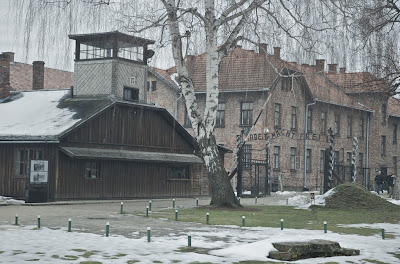 |
| From Auschwitz |
A guide takes you through the permanent exhibition, housed in blocks where prisoners once lived. The numbers are almost beyond comprehension: more than one million people were killed in the gas chambers at Auschwitz and Birkenau. So for me it was the individual details that had the most impact. One of the exhibits is called "Physical evidence of crime", which sounds quite cold and factual and does little to prepare you for what's inside. The displays contain items seized from Jews including suitcases (labelled by their owners, some with dates and names), toothbrushes, shoes (even very small children's shoes), and a 30-metre long case filled with human hair - which the Nazis gathered from people before and after they were killed and used to make army blankets. There are also photos of prisoners brought to Auschwitz with the date of their arrival and the date of their death - many only lasted a month or two because of the appalling conditions. These individual details brought home to me the people behind the numbers and the awful things that happened to them.
Next was a trip to Block 11 - the prison within a prison where people were brought for extreme punishment, which included death by starvation or being placed in a tiny (1.5 square metres) "standing cell" which accommodated four men at a time, all standing up in the dark. They had to work in the camp during the day and then stay in the standing cells overnight.
This was followed by a visit to the only remaining gas chamber, which operated from 1941 to 1942, during which time some 60,000 people were killed. This was another sombre experience. You know what has happened to others on the spot you stand, but cannot fathom what they must have gone through. Most of the gas chambers were destroyed by the Nazis before the Soviet troops arrived, however the chamber at Auschwitz I survives because it was converted into an air-raid shelter for the use by the SS.
 |
| From Auschwitz |
The Nazis attempted to destroy a lot of the evidence of their atrocities, which begs another question - surely they knew what they were doing was wrong? Or were they convinced the rest of the world was wrong?
After visiting Auschwitz I, it is a short bus ride to Auschwitz II-Birkenau. Transport trains from across Nazi-occupied Europe delivered Jews to Birkenau to be killed in one of its five gas chambers.
Having appreciated some of the personal aspects of the victims of Auschwitz, the sight of Birkenau was overwhelming. Birkenau is huge, its fence-line barely visible in the distance. The railway delivered its human cargo through the "Death Gate" and onto the platform where SS doctors decided whether new arrivals were fit to work. Those who weren't, including almost all children, women with children, and the elderly, were sent straight to the gas chambers. Auschwitz II-Birkenau claimed more victims than any other German extermination camp, despite coming into use after all the others. This was a place designed for murder on a massive scale.
It is easy to label the Nazis as evil. But what does that really mean? To me it seems a convenient way of distancing one's self and humans in general from their behaviour. The scarier challenge is to accept that tens of millions of people, people like you and me, came to be involved and support the actions of the Nazis one way or another - or for the most part did nothing to stop it.
Similarly, it is comforting after a visit to Auschwitz to think "I would never treat another human like that". But how can you be sure? Is there any way to know how you would react in an extreme situation or circumstance unless you have experienced it? Would you really be among the few who stand up to disagree with the majority or take action against it ... particularly if the risk of doing so could be death? It is reassuring to think so, but history casts doubt over our certainty.
Auschwitz is a horrifying reminder of what we are capable of.

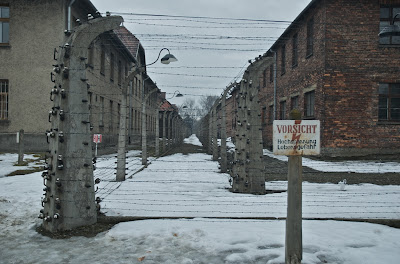
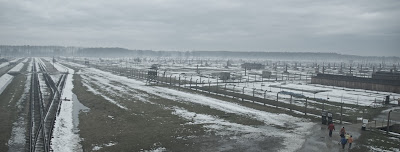
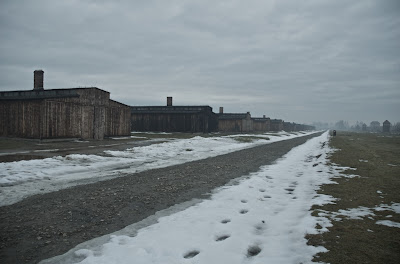


 On the cultural side, it's also been a busy few weeks. Before Christmas I saw the musicals Priscilla: Queen of the Dessert and Mama Mia! (having seen the Australian versions in Sydney, both London productions were very enjoyable), and since Christmas I have seen Cat On A Hot Tin Roof with James Earl Jones (got a well deserved standing ovation) and a black comedy which has just opened in the West End, The Little Dog Laughed. I laughed a lot! One really is spoilt for choice in London! I often wish my bank balance could accommodate more of it! Oh, and I musn't forget that I saw Her Majesty! Yes, in November I saw The Queen on her way to open Parliament. Notably, only myself and the other Australian at my work bothered to go outside to see Her Highness pass by in a horse-drawn carriage. I suppose coming from one of the colonies (as my colleagues sometimes call Australia), it was something special.
On the cultural side, it's also been a busy few weeks. Before Christmas I saw the musicals Priscilla: Queen of the Dessert and Mama Mia! (having seen the Australian versions in Sydney, both London productions were very enjoyable), and since Christmas I have seen Cat On A Hot Tin Roof with James Earl Jones (got a well deserved standing ovation) and a black comedy which has just opened in the West End, The Little Dog Laughed. I laughed a lot! One really is spoilt for choice in London! I often wish my bank balance could accommodate more of it! Oh, and I musn't forget that I saw Her Majesty! Yes, in November I saw The Queen on her way to open Parliament. Notably, only myself and the other Australian at my work bothered to go outside to see Her Highness pass by in a horse-drawn carriage. I suppose coming from one of the colonies (as my colleagues sometimes call Australia), it was something special.
